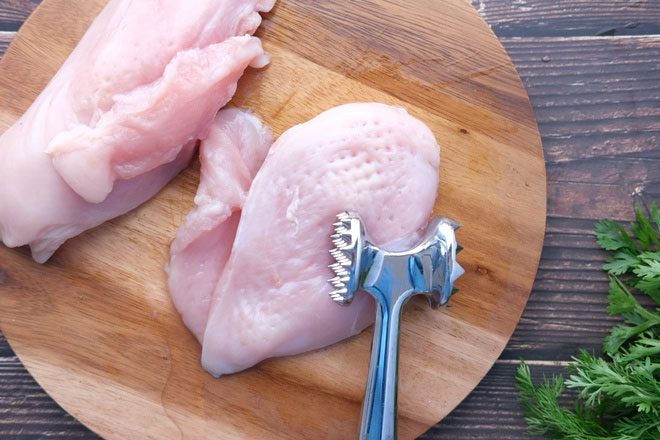Storing food in the refrigerator is a common practice, but overstocking can be harmful to health if not stored and used correctly.
Stocking up on food in the refrigerator is a habit for many people. Chicken is one of the most commonly stored foods for long-term use.
However, the storage time for this food in the refrigerator is limited. Recognizing the color, smell, and texture of the meat will help you determine whether the chicken is still safe to use.

Even when chicken is fresh, it can still harbor a lot of bacteria. (Image: Pexels).
Storage Time for Raw Chicken in the Refrigerator
The Centers for Disease Control and Prevention (CDC) estimates that about one million people in the United States become ill each year after consuming contaminated poultry.
Even when chicken is fresh, it can be contaminated with many types of bacteria including Campylobacter, Salmonella, and Clostridium perfringens. Therefore, the longer raw chicken is stored in the refrigerator, the more time bacteria have to incubate and multiply.
According to guidelines from the U.S. Department of Agriculture (USDA), when raw poultry is stored at 4 degrees Celsius (39 degrees Fahrenheit) or below, you have a maximum of 2 days to use it before discarding it. However, this guideline is relative and may vary depending on individual circumstances.
Thus, the next step is to determine whether the stored poultry can still be cooked or should be discarded due to spoilage.
How to Determine if Chicken is Fresh or Spoiled
Here are 4 ways to help you distinguish between fresh and spoiled chicken after refrigeration.
Check the Expiration Date
If you purchase raw chicken from stores or supermarkets and then store it in the refrigerator, use the “expiration date” on the packaging as a gauge for when the meat may spoil. According to the USDA, fresh chicken, ground meat, and ground poultry should be cooked or frozen within one to two days from the purchase date.
If raw chicken is stored in the refrigerator beyond the expiration date on the packaging, you should discard it immediately to avoid food poisoning.

Good quality chicken will have a light pink color, pale blue-white, or bright white fat. (Image: Pexels).
Observe the Color
To check the freshness and quality of raw poultry, you need to rely on visual cues. Typically, when raw chicken is still fresh and safe to eat, it will have a light pink color, pale blue-white, or even yellow with bright white fat. If the raw chicken has yellowish fat spots or appears greenish or gray, you should discard it immediately.
Smell the Meat
Raw chicken that has gone bad will emit an unpleasant odor even when stored in the refrigerator. To check if the raw chicken is still usable, take it out of the refrigerator and smell it carefully. If you detect any sour, fishy, or sulfur-like odors, you need to throw it away immediately.
Check the Texture of the Meat
If the raw chicken still has the right color and smell, the next step is to pay attention to the texture before cooking. When a piece of raw chicken is still fresh, it will appear glossy, feel moist to the touch, and even slightly slippery. However, if the meat feels slimy, sticky, and mushy, you should discard it as soon as possible.


















































